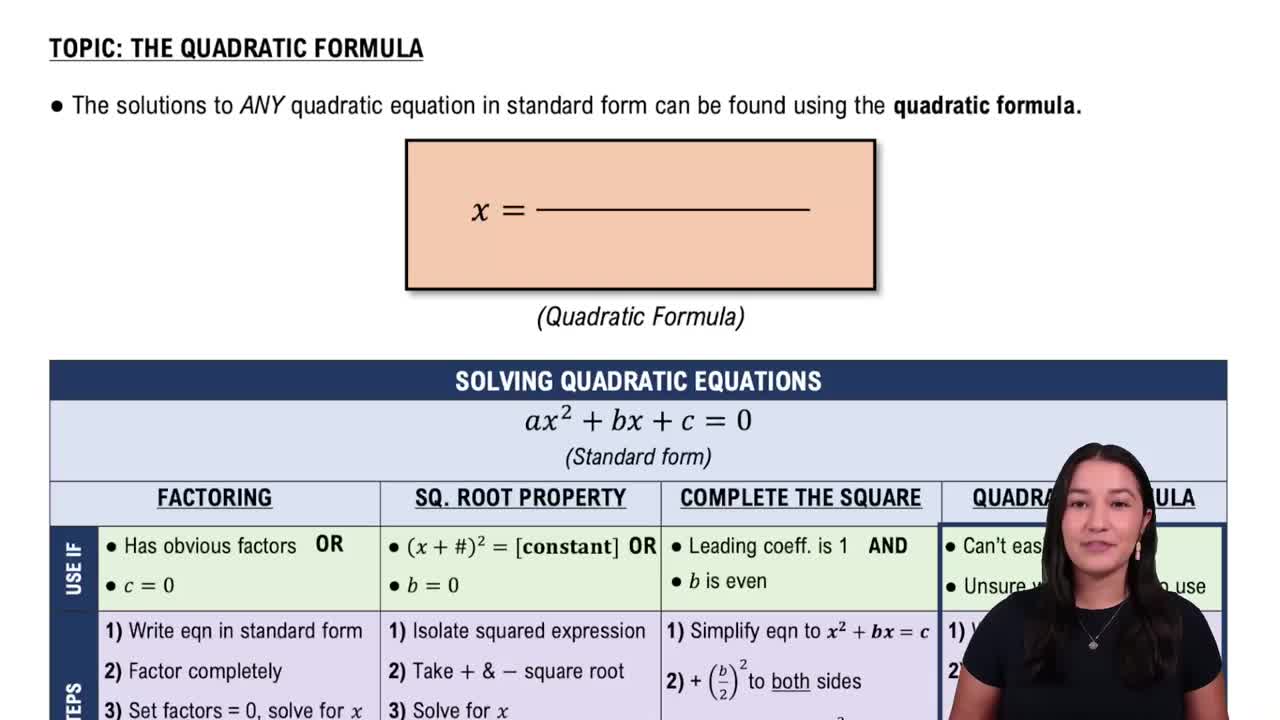Here are the essential concepts you must grasp in order to answer the question correctly.
Quadratic Functions
A quadratic function is a polynomial function of degree two, typically expressed in the form f(x) = ax² + bx + c. The graph of a quadratic function is a parabola, which opens upwards if 'a' is positive and downwards if 'a' is negative. Understanding the basic shape and properties of the standard quadratic function, f(x) = x², is essential for applying transformations.
Recommended video:
Solving Quadratic Equations Using The Quadratic Formula
Transformations of Functions
Transformations of functions involve shifting, stretching, compressing, or reflecting the graph of a function. For quadratic functions, common transformations include vertical and horizontal shifts, vertical stretches or compressions, and reflections across the x-axis. In the given function h(x) = -2(x+2)² + 1, the transformations include a reflection over the x-axis, a vertical stretch by a factor of 2, and shifts to the left and up.
Recommended video:
Domain & Range of Transformed Functions
Vertex Form of Quadratic Functions
The vertex form of a quadratic function is expressed as f(x) = a(x-h)² + k, where (h, k) is the vertex of the parabola. This form makes it easier to identify the vertex and understand how transformations affect the graph. In the function h(x) = -2(x+2)² + 1, the vertex is located at (-2, 1), indicating the point where the parabola reaches its maximum value due to the negative coefficient.
Recommended video:
 Verified step by step guidance
Verified step by step guidance Verified video answer for a similar problem:
Verified video answer for a similar problem:



 5:25m
5:25m